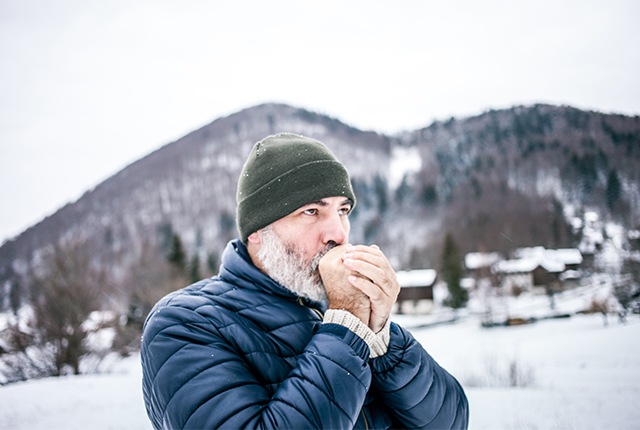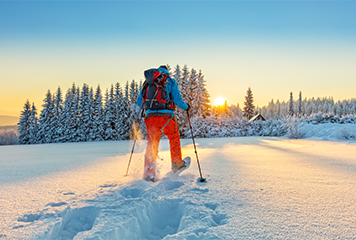Winter Safety: Avoiding Hypothermia and Frostbite

We’re used to winter here in northern Michigan. In fact, skiing, snowshoeing, and other cold-weather activities are exactly what draws many of us to the region.
But every year the snow and ice bring new cases of hypothermia and frostbite. These are two medical emergencies requiring treatment right away, but they can be avoided. Here’s what you should know to keep you and your family safe this winter.
What is Hypothermia?

According to the Centers for Disease Control and Prevention (CDC), hypothermia victims are typically:
- Older adults with inadequate food, clothing, or heating
- Babies sleeping in cold bedrooms
- People who remain outdoors for prolonged periods such as hikers, hunters, and the homeless population
- Individuals who drink alcohol to excess or use illicit drugs
“People participate in riskier behavior when alcohol is involved,” said Sarah Helveston, Munson Medical Center Trauma Program Manager. “This impacts a person’s ability to seek shelter and protect themselves from the elements.”
Hypothermia Signs and Symptoms
There are a few telltale signs of hypothermia to be aware of, including shivering and confusion in adults. A person suffering from hypothermia may appear fatigued with fumbling hands, slurred speech, and apparent memory loss.
In babies, be on the lookout for bright red and cold skin and very low energy levels.
If you notice someone struggling with symptoms of hypothermia, you should take action immediately. If you have a thermometer, take the person’s temperature. If below 95° F, make sure to seek immediate medical help.
Or at the very least, try and warm up anyone you suspect is showing hypothermia symptoms. Remove any wet clothing he or she is wearing and warm the center of his or her body. An electric blanket works wonders, or you can use skin-to-skin contact under loose blankets. Once the person’s body temperature has risen, keep him or her dry and wrapped in warm clothes while you seek medical help.

“It’s important to remove wet clothing and replace with dry, warm blankets, or clothing. It’s also important to not rewarm someone too quickly.”
If a person shows symptoms of extreme hypothermia, such as lost consciousness or no breath or pulse, make sure to call 9-1-1 immediately.
What is Frostbite?
According to the National Safety Council, frostbite is the most common injury resulting from exposure to severe cold. Best known to affect fingers and toes, frostbite can affect any extremity including the nose, ears, cheeks, and chin. When skin freezes, this can damage the underlying tissues to such an extent that amputation is required.
Those with poor blood circulation or not dressed properly for conditions (no hats, gloves, or thick socks) are most at risk.
Munson Healthcare has admitted four patients for trauma-related frostbite injuries since 2015. Two of those patients required transfer to a specialized burn center for treatment.
Frostbite: Signs and Symptoms
The CDC’s identifiers for potential frostbite include white or grayish-yellow skin, skin that feels unusually firm or waxy, and numbness. Individuals experiencing symptoms may not realize it because the affected areas have lost feeling. Redness or pain on exposed skin is another strong marker that frostbite may be forming.
Seek proper medical help right away if you identify signs of frostbite on yourself or another person. Other ways to take action:
- Move to a warm room immediately, but do not walk on affected feet and toes unless necessary—doing so will increase damage.
- Soak affected areas in warm (comfortable to the touch) water or use body heat from another person to gradually warm affected extremities
- Avoid using heating pads, heat lamps, fireplaces, or similar heat sources as this can burn any numb areas of the skin—do not rub or massage affected areas
Preventing Hypothermia and Frostbite

- Wear warm clothing and dress in layers
- Keep clothing dry
- Go indoors at regular intervals
- Do not go out in cold weather when wet
- Keep your hands and head covered with mittens/hats
- Keep your feet covered with water-resistant boots
All it takes is a few minutes to plan ahead and make sure you stay warm and dry. Now get out there and enjoy all the activities winter brings!
Munson Medical Center Trauma Services is a proud partner of the Chill Out for Winter Safety program.